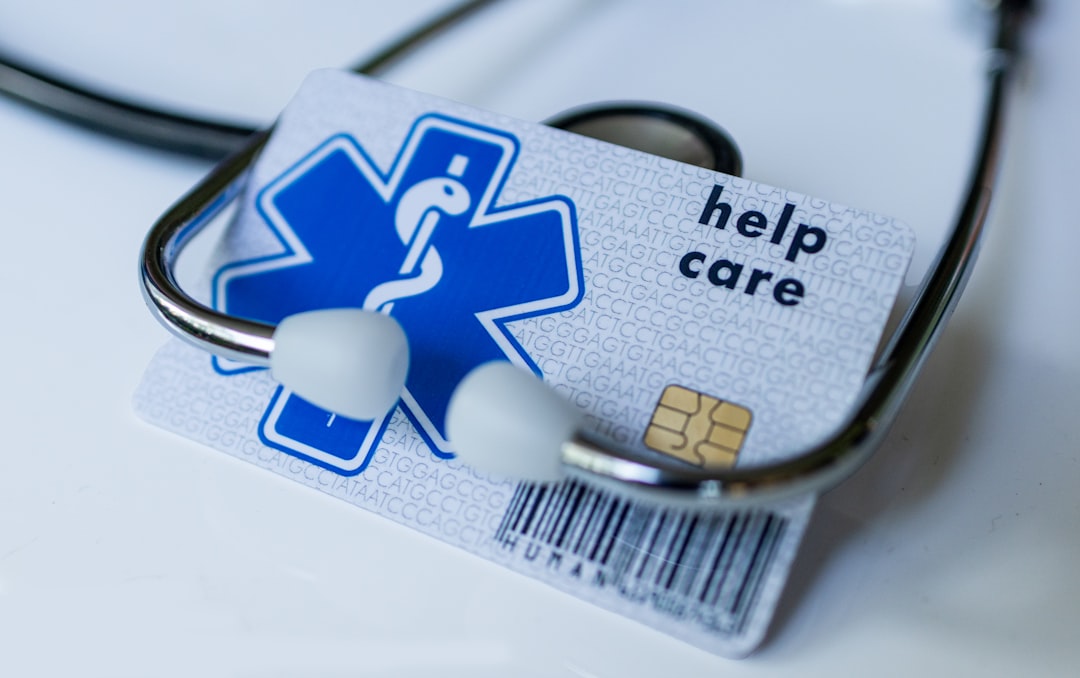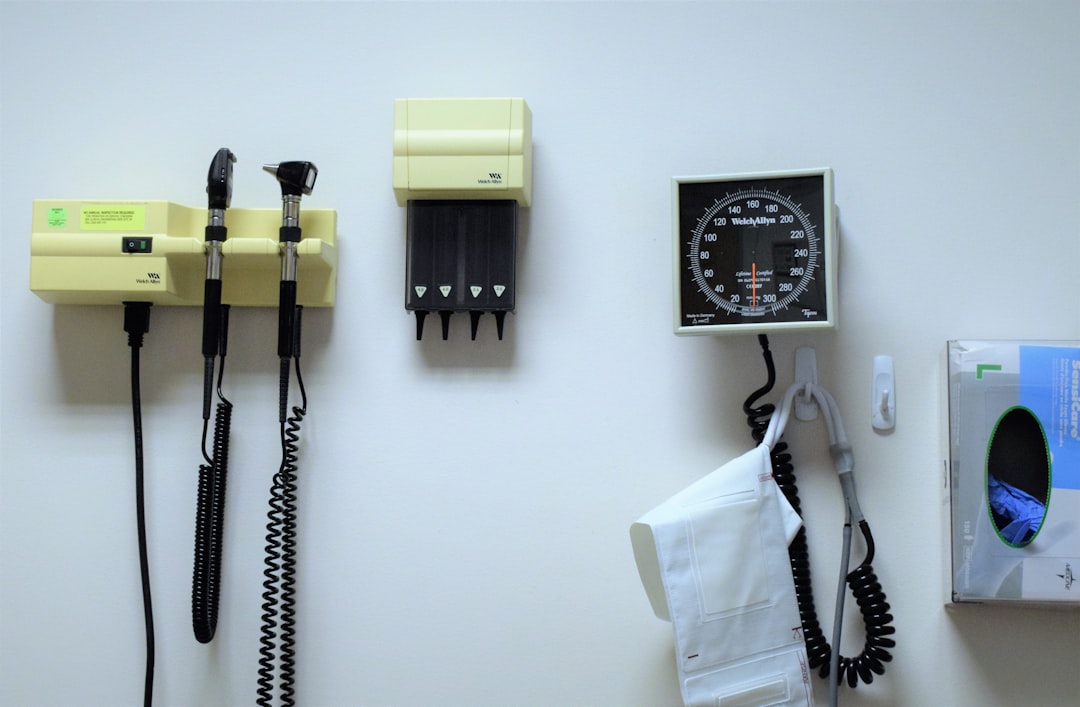

Engage prospects with a scan and streamline customer engagement with FREE QR code marketing tools by Sona – no strings attached!
Create a Free QR CodeFree consultation

No commitment

Engage prospects with a scan and streamline customer engagement with FREE QR code marketing tools by Sona – no strings attached!
Create a Free QR CodeFree consultation

No commitment
Rapid digital transformation in healthcare referral services is pushing providers to reimagine how they engage patients, streamline documentation, and drive high-quality referrals. Unaddressed, longstanding pain points persist: traditional methods, like paper surveys and manual forms, often lead to lost insights and missed engagement opportunities at crucial moments. These outdated processes create friction for both staff and patients, delaying essential feedback that healthcare teams need to improve referral pathways and outcomes in patient documentation.
QR code technology is establishing itself as a practical bridge between physical and digital workflows in healthcare, tackling the challenge of collecting timely, actionable feedback without complexity. Instead of relying on clunky, error-prone manual entry or inaccessible email surveys, organizations can invite patients and providers to share their experience instantly, directly from referral forms, patient documentation, or educational collateral, simply by scanning a code. This trend is reflected in medical marketing.
For healthcare referral services, the strategic adoption of QR codes enables rapid feedback capture at the point of care, enriches referral data, surfaces critical engagement signals, and drives continuous improvement in both patient experience and operational efficiency. Modern QR solutions like Sona QR address these persistent challenges and set new standards for patient-centric service delivery across the referral journey.

Manual feedback methods frequently result in low participation rates and delayed responses, leaving high-value insights uncaptured or arriving too late for meaningful follow-up. Healthcare referral services have long struggled with these issues, missing nuanced feedback that, if surfaced in real time, could have triggered faster service improvements or supported more personalized patient engagement. QR codes change the timing and context of feedback: using QR feedback forms, they meet people exactly when and where their experiences are formed.
By integrating QR-enabled forms into the referral workflow, organizations offer frictionless experiences. Patients and providers can share input with a simple scan, without logins or app downloads. This shift replaces analog processes such as paper satisfaction cards, clipboard surveys, and phone follow-ups that rarely reach the right person at the right time. The result is faster insight, less administrative labor, and a higher likelihood of capturing authentic, context-rich responses.
Contemporary platforms simplify deploying, tracking, and integrating QR-enabled feedback for continuous improvement. With dynamic codes, live dashboards, and integrations into core systems, teams can measure engagement, spot bottlenecks, and act sooner on real insights that strengthen the referral network.

The struggle to capture actionable insights from patient and provider interactions is a familiar frustration. Feedback delays or gaps often mean missed opportunities to refine service quality, improve workflow, or identify satisfaction risks before they escalate. Analog tools like phone calls, mailed questionnaires, and open-ended emails are difficult to manage at scale, which leads to incomplete data and inconsistent follow-up.
QR codes offer a simple, universal interface that removes friction while increasing data quality. A quick scan can transport a user to a secure survey, a referral confirmation form, or a knowledge resource. That speed and clarity reduce drop-off and improve the odds that feedback reflects the real experience of care and transition between providers. For patients, this also improves patient experience.
By combining convenience with robust analytics, QR codes empower staff to optimize documentation, drive targeted healthcare professional engagement, and elevate the entire feedback process to meet modern expectations.

Healthcare teams often find that disconnected digital tools or generic static codes fall short of supporting real-time feedback and secure data flows. As referral networks evolve, feedback pathways and patient destinations need to keep pace without expensive reprints or confusing changes to patient materials. Selecting the right QR type reduces friction while maintaining compliance and data integrity.
Different QR formats align with specific goals in referral workflows. For example, linking to mobile forms simplifies feedback collection, while pre-filled emails can streamline provider-to-provider communication. Choosing dynamic codes unlocks editing and tracking features essential for quality improvement.
Platforms that support dynamic QR codes enable healthcare organizations to edit, control, and secure campaigns centrally. This flexibility is vital in environments where policy updates, language adaptations, and pathway changes happen frequently.
Missed feedback at key referral and discharge moments can leave engagement data incomplete and drive down the accuracy of NPS, CSAT, or quality tracking. Many organizations struggle to reach patients after they leave the clinic, resulting in limited insight into what worked well and what must improve. QR codes extend the feedback window and make participation painless.
When placed strategically, QR codes encourage action at natural pauses in the journey. They also collect contextual metadata that helps interpret results by site, department, or referral type. This context turns raw feedback into prioritized projects that improve patient experience and coordination between referring and receiving providers.
By intercepting audiences at high-value moments that were previously unmeasured, organizations can close critical data gaps, improve real-time segmentation, and drive smarter, targeted quality improvement efforts.
Legacy referral systems often struggle to capture user sentiment or identify anonymous engagement, which means signals of interest or dissatisfaction go unnoticed. QR codes help surface vital insights across a range of referral interactions and care transitions. Each scan can be tied to a known campaign, location, and moment in the journey, making the data far more actionable.
Care teams and referral coordinators benefit from standardized, lightweight pathways that do not require extra apps or accounts. This lowers the barrier to participation for both patients and providers, leading to higher response rates and more reliable insights for quality initiatives.
Each scan generates structured data that can trigger service recovery, education refreshers, or care navigation outreach. This precision helps teams prioritize timely follow-up and enhance the overall referral journey.
A persistent oversight in many healthcare marketing and operations strategies is the inability to distinguish between passive visitors and truly engaged patients or providers. Without real-time signaling, high-intent contacts often remain anonymous and unpursued, which leads to missed opportunities for targeted support or follow-up. QR scans are a practical remedy because they create measurable moments of intent.
By deploying unique codes across touchpoints, referral services can automatically segment audiences based on context and behavior. This segmentation powers personalized messaging, reduces noise, and improves the impact of outreach for both patients and referring providers. For campaign execution with first‑party signals, see Sona’s Playbook on intent-driven retargeting.
Automated integration with CRM and marketing platforms ensures that high-value engagement is never missed. Scans and responses can trigger journeys in tools like Sona + HubSpot or Salesforce, enabling timely, relevant communication and connecting insight with action.
Siloed marketing and patient engagement efforts often lead to incomplete outreach, duplicated work, or missed targeting because traditional methods fail to capture the full spectrum of offline-to-online interactions. QR-driven processes unify the strategy and make every channel more measurable. They convert static assets into interactive experiences and link those engagements to outcomes that matter.
In healthcare referral services, the most effective deployments blend physical materials, on-site experiences, and digital follow-up. QR codes provide a consistent, secure entry point across all those environments so patients, caregivers, and providers know exactly how to engage.
Centralized QR systems provide the tracking, visibility, and automation necessary to tie each engagement to concrete outcomes. With a platform like Sona QR, teams can manage codes, monitor performance by channel, and sync scan data with CRM and EHR systems for complete visibility.
Varied team adherence, inconsistent materials, and gaps in analytics are persistent challenges whenever new feedback initiatives are rolled out. A disciplined, step-by-step approach keeps QR deployments consistent, trackable, and secure across clinics, departments, and partner networks. It also clarifies accountability so that everyone knows what success looks like and how to achieve it.
Use the following checklist to move from pilot to repeatable program. Each step can be completed in days, not months, and can be adapted to your organization’s compliance, language, and accessibility requirements.
Start by clarifying the business outcome you need to impact. Objectives might include improving post-referral satisfaction, reducing time to schedule specialist visits, or increasing telehealth adoption among first-time users. Clear goals inform your survey questions, placement strategy, and data integrations.
Focus the scope to avoid noise. For example, launch with a single referral pathway such as orthopedic consults or cardiology follow-ups. Specify the metric you want to move, like increasing survey response rate from 12 percent to 30 percent or reducing unresolved complaints within 48 hours. Document the objective so clinical and marketing stakeholders align.
Select a QR format and destination that match the objective. For feedback collection, dynamic web link codes routed to secure, mobile-optimized forms are the default. For provider communications, SMS or email pre-fill may be faster and more convenient. If you anticipate frequent content updates, dynamic codes are essential so you can change destinations without reprinting.
Ensure the toolset supports compliance, encryption, and access control. Use dynamic codes with unique identifiers for clinics, campaigns, or placements to improve attribution. With Sona QR, you can manage formats in one place, apply consistent governance, and maintain audit trails that satisfy internal and external requirements.
Design the visual frame and copy for real-world usage. The call to action should be succinct, such as Scan to share feedback or Scan for after-visit instructions. Use high contrast, adequate white space, and sizes that are scannable from expected distances. Add your logo or department name to build trust.
Test scannability on common devices under mixed lighting and at various angles. Confirm the destination loads quickly on mobile networks and is accessible for screen readers. If your population includes multiple languages, add a language selector or detection. Place a short privacy note that clarifies how responses will be used and protected.
Roll out QR codes where engagement is most likely. Prioritize referral handoffs, discharge packets, waiting rooms, and follow-up emails. For provider audiences, add codes to liaison brochures, event handouts, and continuing education materials. Tailor placements to site layouts, traffic patterns, and the specific pathways you are targeting.
Create a simple playbook so staff know how and when to promote scanning. Train front-desk and care teams to mention the QR survey during check-out. For mailed materials, personalize codes by patient or cohort to maintain context. Maintain a shared inventory of codes and locations so nothing is duplicated or forgotten.
Instrument your campaign with unique codes per location or medium. Review scan volume, response completion rate, and time-to-response weekly. Connect Sona QR analytics and Sona.com attribution to your CRM and care systems so you can see how scans correlate with outcomes like scheduled follow-ups or service recovery. For measurement strategy, use Sona’s guide to offline attribution.
Use insights to improve. A/B test calls to action, survey length, and placement height. If one clinic underperforms, adjust signage size or staff scripts. Share wins and lessons learned across teams and extend successful patterns to new departments or referral types.
Historically, feedback collected through piecemeal systems was divorced from care improvements, limiting its impact and reducing stakeholder buy-in. Teams could count surveys, but connecting that data to the downstream effects on scheduling speed, adherence, or satisfaction was difficult. QR-driven analytics change that by creating a continuous thread from scan to outcome.
When scan data flows into your analytics stack and CRM, you can monitor performance in real time and attribute improvements to specific placements or processes. This visibility helps secure executive support and fuels iterative optimization across the referral network; see Sona’s take on pipeline impact for connecting engagement to outcomes.
Advanced platforms like Sona QR and Sona.com automate much of this analysis. They make it easier to identify exactly where service improvements are working, which audiences are responding, and where to focus next for outsized gains.
Scaling QR feedback initiatives can be hampered by regulatory uncertainty, inconsistent usage across sites, or limited staff training. Without a plan for governance and enablement, data quality suffers and compliance risks increase. The following practices preserve integrity while expanding reach.
Think of growth as a sequence of controlled pilots that become templates. As you validate what works, document and share. This approach builds confidence among clinicians and administrators and reduces the burden on central teams.
This strategic approach ensures that as your program grows you maintain accountability, compliance, and a cycle of continual process improvement.

Healthcare providers across the country are finding that, when embedded in daily workflows, QR codes reduce missed insights and drive measurable improvement in referral processes. The highest performing programs keep surveys short, use dynamic codes to adapt quickly, and integrate analytics deeply into operational reviews.
The following examples illustrate how small, targeted QR deployments can create immediate value. Each case connects the scan to a downstream action that matters for patients, providers, and the business.
Feedback from staff and patients consistently points to improved workflow efficiency, greater documentation accuracy, and faster closure of feedback loops. These gains prove that well-placed QR codes can have outsized impact on the quality of referral experiences.
IT leaders often caution that without proper EHR integration or careful data mapping, feedback initiatives may create new silos. Data privacy concerns also loom large given the sensitivity of patient information and the potential consequences of non-compliance. Addressing these risks early is essential to sustain momentum and trust.
Experts emphasize the importance of building QR workflows into existing systems and routines rather than layering on new, parallel processes. Success depends on clear governance, patient-centered design, and the discipline to measure and iterate.
With these foundations in place, organizations can scale QR programs confidently while protecting patient trust and sustaining measurable improvements.
Healthcare referral services striving to meet modern expectations know that old analog feedback methods conceal critical signals, delay response, and limit the data needed for improvement. By modernizing with QR-powered, real-time feedback systems, providers bridge offline and online moments, illuminate engagement signals, and accelerate actionable insight. The payoff is measurable improvements in patient experience, provider collaboration, and operational performance.
With every embed, from referral handoff to telehealth exit, QR code-driven feedback fosters higher participation, streamlines documentation, and upholds the privacy standards demanded in healthcare. Dynamic codes, clear calls to action, and integrated analytics create a virtuous cycle where each scan leads to timely support and continuous improvement. Teams that lean into this evolution gain the visibility they need to adapt and lead in a patient-centric era.
Healthcare referral services that adapt to today’s demands recognize that seamless engagement, robust data integration, and rapid process improvement are no longer optional. By deploying QR codes across both digital and physical workflows, teams can close the feedback gap, connect insight with action, and elevate every moment of the referral journey. With platforms like Sona QR and Sona.com, you can generate secure, trackable codes, unify offline and online touchpoints, and attribute engagement to outcomes that matter. Every scan becomes an opportunity to improve care, strengthen relationships, and drive better health outcomes. Start creating QR codes for free.
QR codes have revolutionized healthcare referral services by transforming patient feedback collection into an efficient, real-time process. Beyond simply gathering insights, QR codes enable healthcare providers to enhance patient experiences, streamline referral tracking, and improve the quality of care through timely, actionable feedback. Imagine instantly knowing which referral pathways are most effective and using that data to optimize patient outcomes and satisfaction.
With Sona QR, you can create dynamic, trackable QR codes tailored to your referral workflows, update feedback campaigns instantly without reprinting materials, and connect every scan to meaningful performance metrics. This seamless integration empowers healthcare organizations to close the feedback loop faster and make data-driven decisions that elevate service quality.
Start for free with Sona QR today and turn every patient interaction into a powerful opportunity for continuous improvement and growth in your healthcare referral services.
Healthcare referral services improve patient outcomes by capturing timely, actionable feedback at key moments, streamlining documentation, enhancing patient engagement, and enabling faster response to issues through integrated digital workflows.
QR codes in healthcare referral services enable instant feedback collection, reduce administrative workload, close the offline-online gap, provide dynamic content flexibility, offer precise analytics, and integrate seamlessly with clinical and marketing systems.
They enhance patient engagement by offering frictionless, accessible feedback options through QR codes placed at high-attention touchpoints, enabling patients to share experiences instantly without logins or app downloads.
Challenges include potential regulatory uncertainty, inconsistent usage across sites, limited staff training, privacy concerns, and the need for clear governance to maintain data quality and compliance.
Providers can leverage technology by integrating QR code-enabled feedback forms with EHR and CRM systems, automating data capture and workflows, using dynamic QR codes for flexible content updates, and analyzing scan data to drive continuous improvement.
Best practices include defining clear objectives, choosing appropriate QR code formats, designing for accessibility and real-world usage, deploying codes strategically across touchpoints, tracking analytics, and optimizing campaigns based on data insights.
They ensure data security and privacy by using HIPAA-aligned platforms with encryption in transit and at rest, role-based access controls, consent checkpoints, clear privacy statements, and staff education on proper handling of protected health information.
Latest trends include rapid digital transformation using QR codes for real-time feedback, dynamic QR code deployment, deep integration with EHR and CRM systems, automated workflows, and data-driven segmentation for personalized engagement.
They help manage patient documentation by replacing manual forms with QR-enabled digital surveys that integrate directly into clinical systems, reducing errors, accelerating data capture, and facilitating faster follow-up and care coordination.
They facilitate collaboration by using QR codes for provider-to-provider communication, pre-filled emails, and shared feedback forms that streamline referral confirmations, clarify instructions, and support targeted outreach and education.
Use Sona QR's trackable codes to improve customer acquisition and engagement today.
Create Your FREE Trackable QR Code in SecondsJoin results-focused teams combining Sona Platform automation with advanced Google Ads strategies to scale lead generation

Connect your existing CRM

Free Account Enrichment

No setup fees
No commitment required

Free consultation

Get a custom Google Ads roadmap for your business






Launch campaigns that generate qualified leads in 30 days or less.
